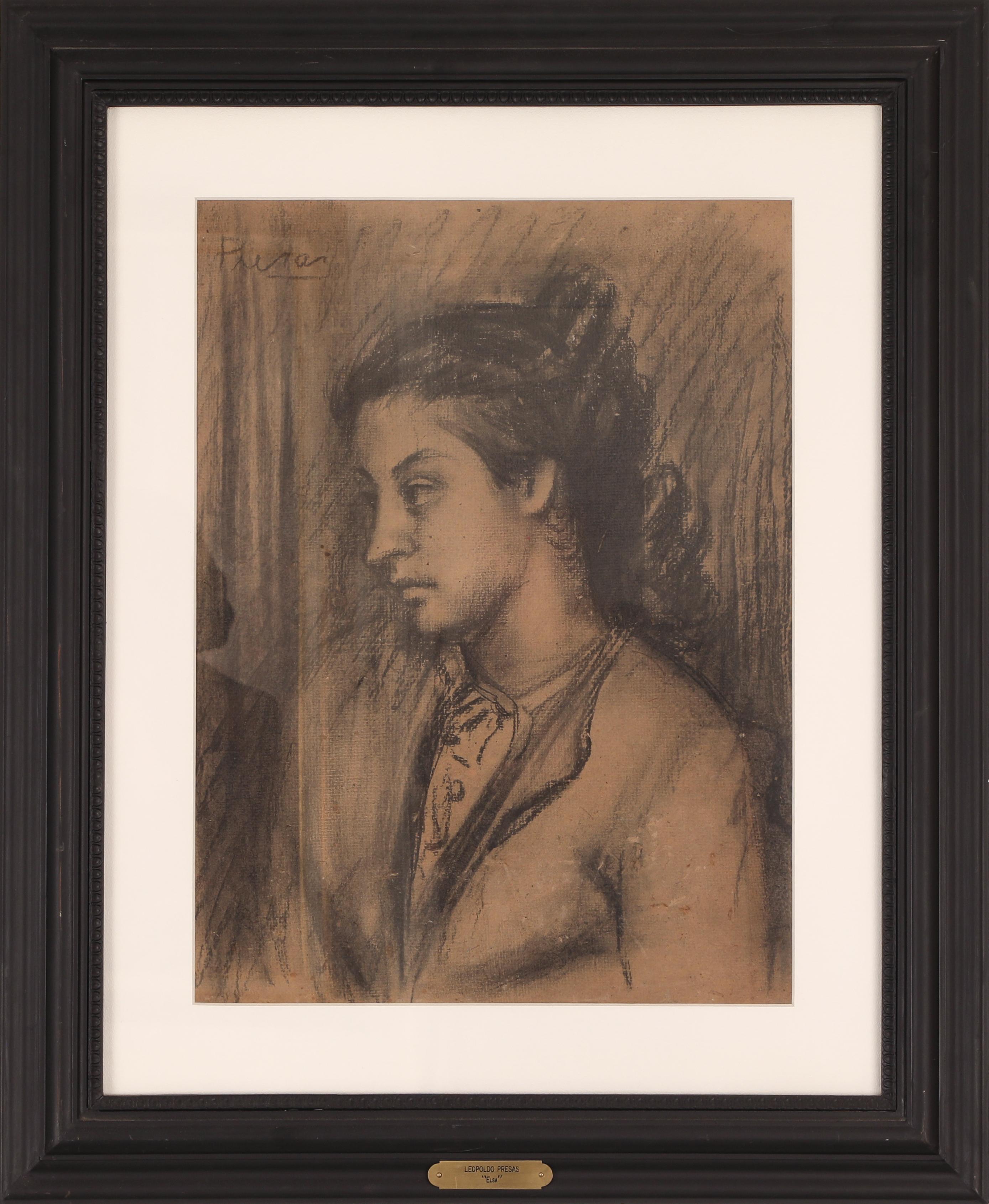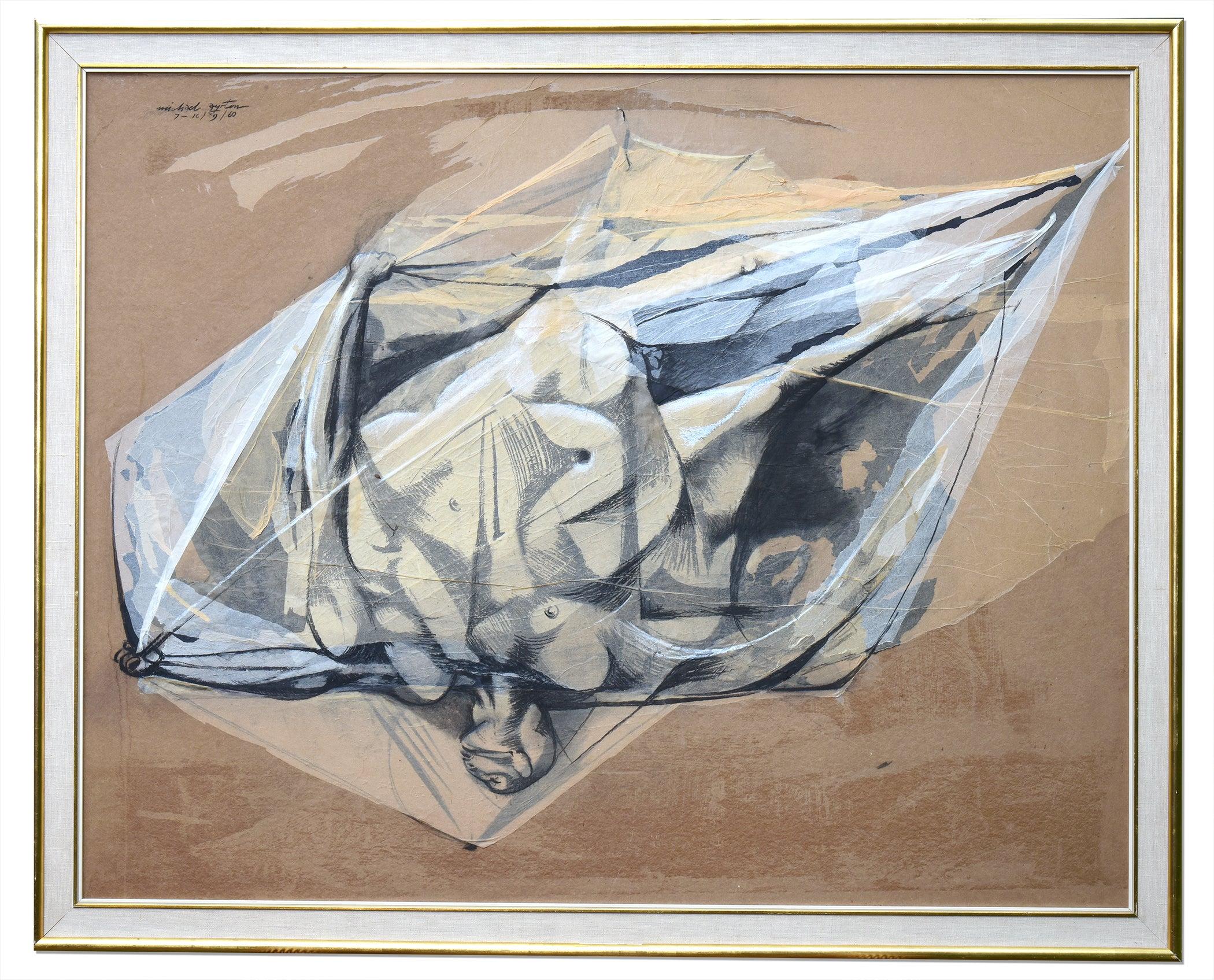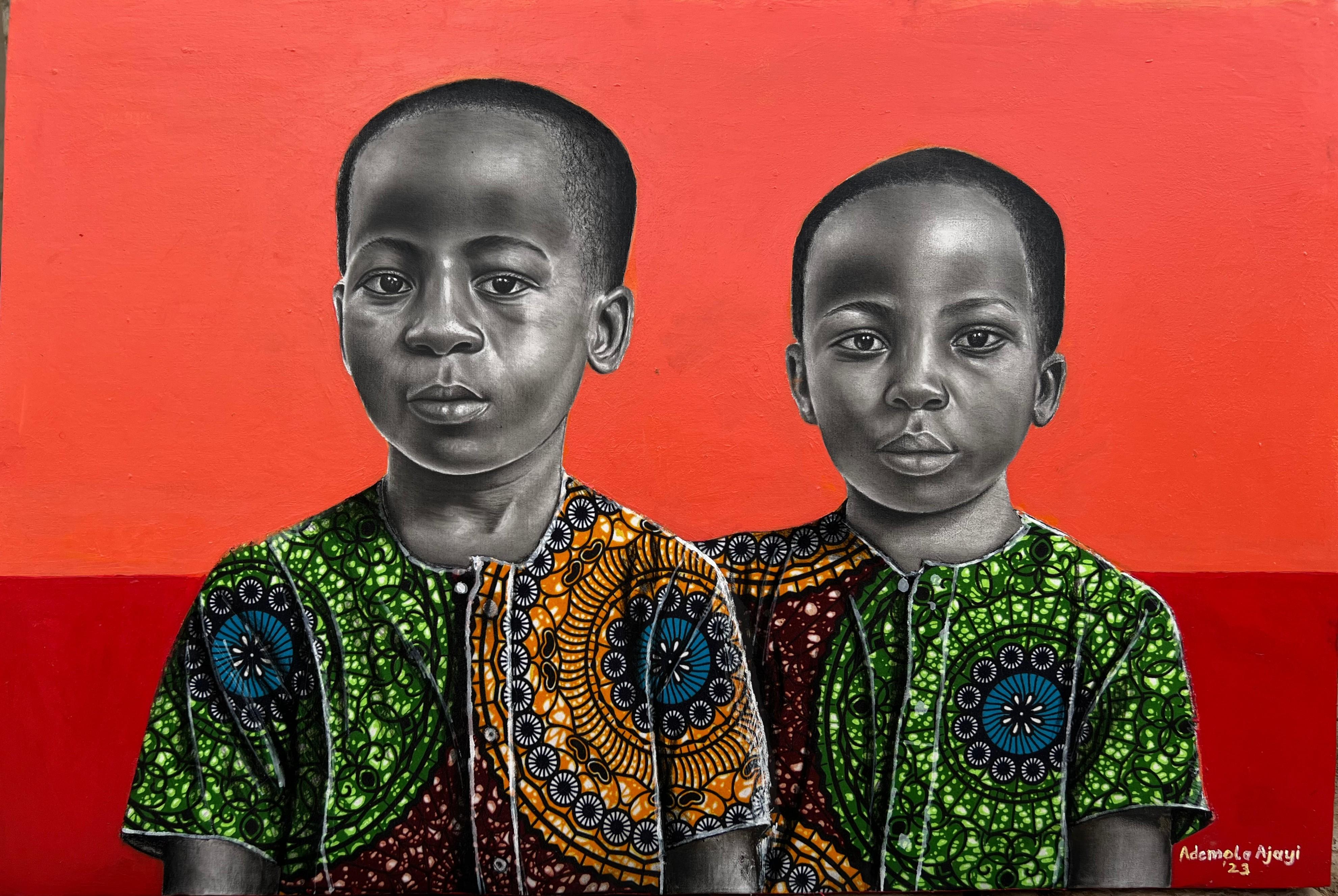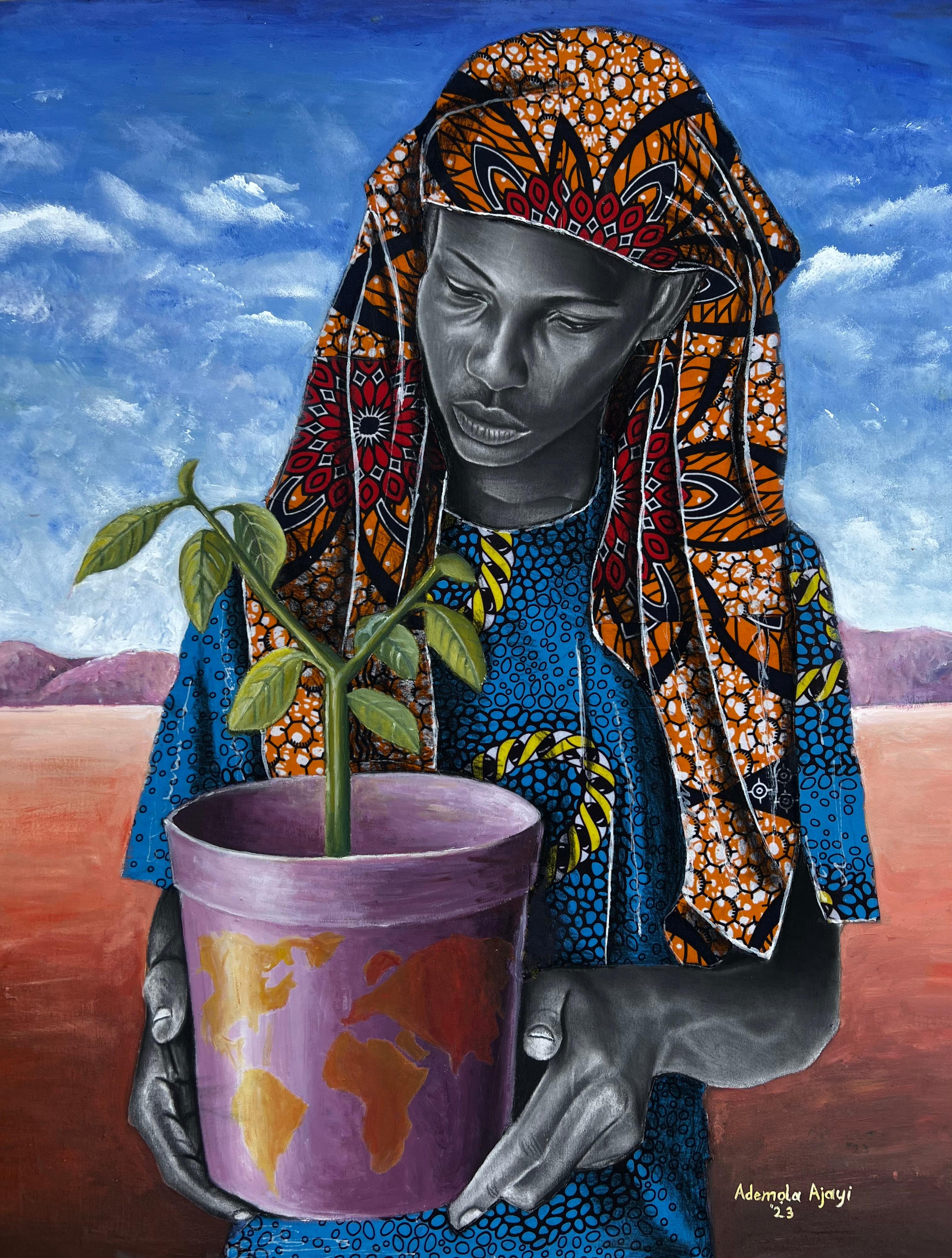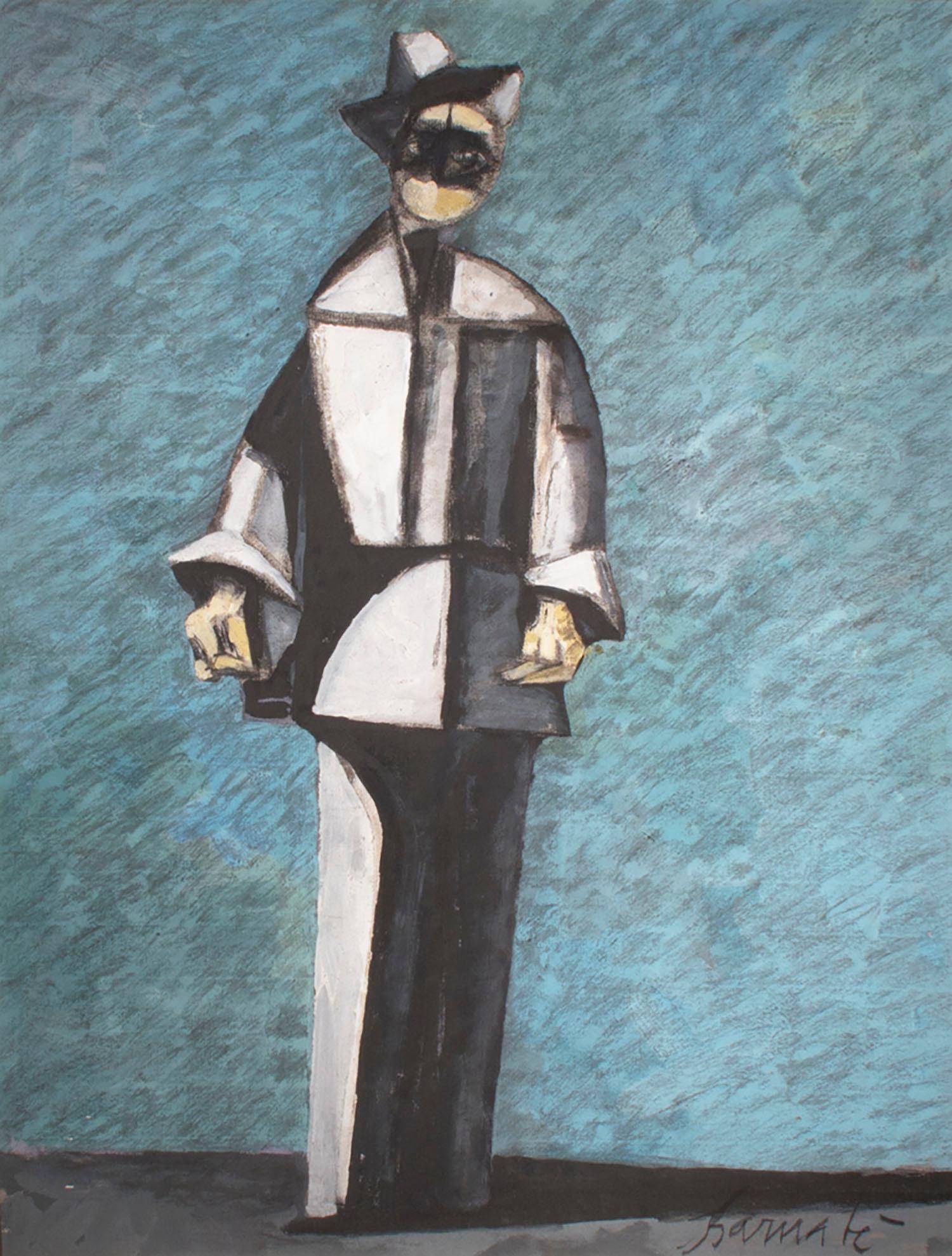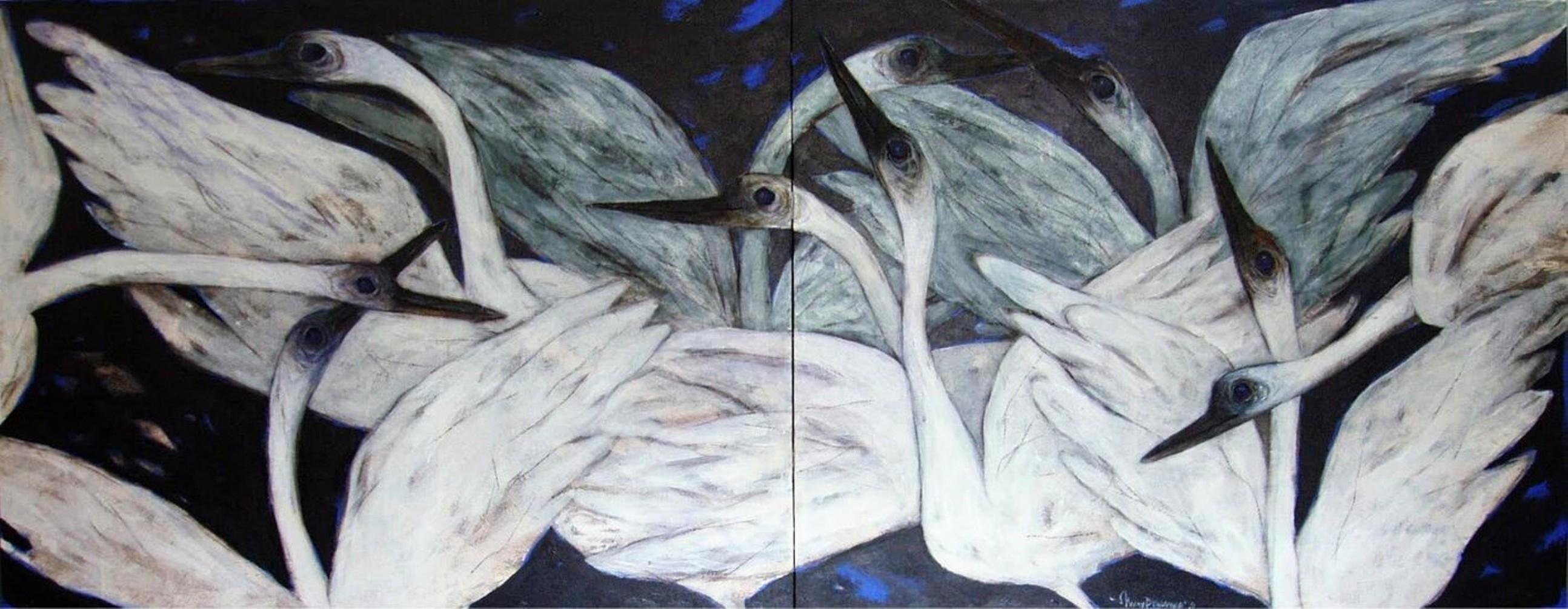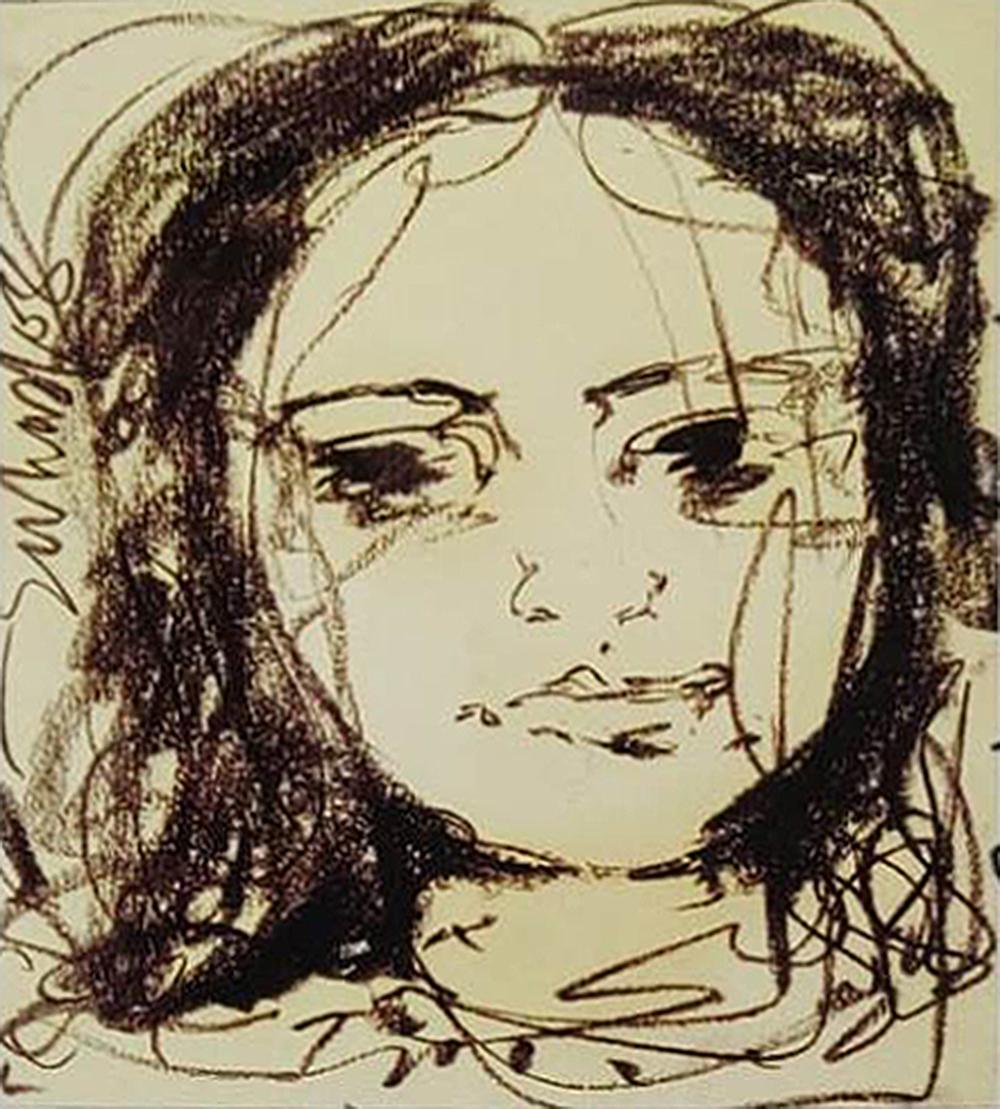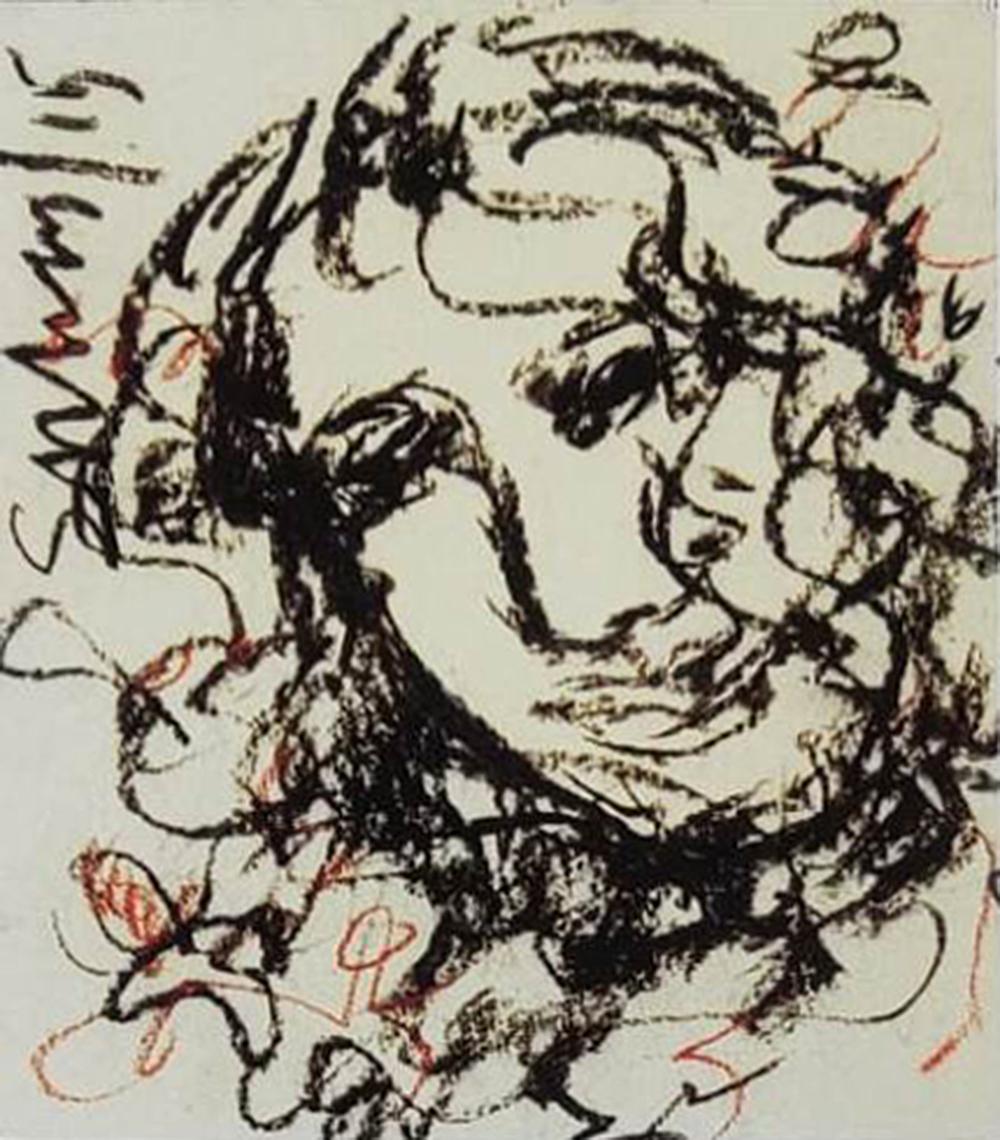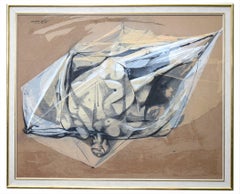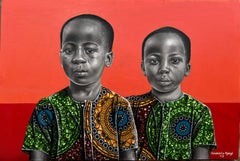
Latin American Beauty
View Similar Items
Want more images or videos?
Request additional images or videos from the seller
1 of 7
UnknownLatin American Beauty
About the Item
- Dimensions:Height: 23 in (58.42 cm)Width: 17.25 in (43.82 cm)
- Medium:
- Movement & Style:
- Period:
- Condition:
- Gallery Location:Surfside, FL
- Reference Number:1stDibs: LU382650792
About the Seller
4.9
Platinum Seller
These expertly vetted sellers are 1stDibs' most experienced sellers and are rated highest by our customers.
Established in 1995
1stDibs seller since 2014
1,546 sales on 1stDibs
Typical response time: 1 hour
More From This SellerView All
- Rare Modernist Hungarian Rabbi Pastel Drawing Gouache Painting Judaica Art DecoBy Hugó ScheiberLocated in Surfside, FLRabbi in the synagogue at prayer wearing tallit and tefillin. Hugó Scheiber (born 29 September 1873 in Budapest – died there 7 March 1950) was a Hungarian modernist painter. Hugo Scheiber was brought from Budapest to Vienna at the age of eight where his father worked as a sign painter for the Prater Theater. At fifteen, he returned with his family to Budapest and began working during the day to help support them and attending painting classes at the School of Design in the evening, where Henrik Papp was one of his teachers. He completed his studies in 1900. His work was at first in a post-Impressionistic style but from 1910 onward showed his increasing interest in German Expressionism and Futurism. This made it of little interest to the conservative Hungarian art establishment. However, in 1915 he met the great Italian avant-gardist Filippo Tommaso Marinetti and the two painters became close friends. Marinetti invited him to join the Futurist Movement. The uniquely modernist style that he developed was, however, closer to German Expressionism than to Futurism and eventually drifted toward an international art deco manner similar to Erté's. In 1919, he and his friend Béla Kádar held an exhibition at the Hevesy Salon in Vienna. It was a great success and at last caused the Budapest Art Museum to acquire some of Scheiber's drawings. Encouraged, Scheiber came back to live in Vienna in 1920. A turning point in Scheiber's career came a year later, when Herwarth Walden, founder of Germany's leading avant-garde periodical, Der Sturm, and of the Sturm Gallery in Berlin, became interested in Scheiber's work. Scheiber moved to Berlin in 1922, and his paintings soon appeared regularly in Walden's magazine and elsewhere. Exhibitions of his work followed in London, Rome, La Paz, and New York. Scheiber's move to Germany coincided with a significant exodus of Hungarian artists to Berlin, including Laszlo Moholy-Nagy and Sandor Bortnyik. There had been a major split in ideology among the Hungarian avant-garde. The Constructivist and leader of the Hungarian avantgarde, Lajos Kassák (painted by Hugó Scheiber in 1930) believed that art should relate to all the needs of contemporary humankind. Thus he refused to compromise the purity of his style to reflect the demands of either the ruling class or socialists and communists. The other camp believed that an artist should be a figurehead for social and political change. The fall out and factions that resulted from this politicisation resulted in most of the Hungarian avant gardists leaving Vienna for Berlin. Hungarian émigrés made up one of the largest minority groups in the German capital and the influx of their painters had a significant effect on Hungarian and international art. Another turning point of Scheiber's career came in 1926, with the New York exhibition of the Société Anonyme, organized by Katherine Dreier. Scheiber and other important avant garde artists from more than twenty-three countries were represented. In 1933, Scheiber was invited by Marinetti to participate in the great meeting of the Futurists held in Rome in late April 1933, Mostra Nazionale d’Arte Futurista where he was received with great enthusiasm. Gradually, the Hungarian artists began to return home, particularly with the rise of Nazism in Germany. Kádar went back from Berlin in about 1932 and Scheiber followed in 1934. He was then at the peak of his powers and had a special flair in depicting café and cabaret life in vivid colors, sturdily abstracted forms and spontaneous brush strokes. Scheiber depicted cosmopolitan modern life using stylized shapes and expressive colors. His preferred subjects were cabaret and street scenes, jazz musicians, flappers, and a series of self-portraits (usually with a cigar). his principal media being gouache and oil. He was a member of the prestigious New Society of Artists (KUT—Képzőművészek Új Társasága)and seems to have weathered Hungary's post–World War II transition to state-communism without difficulty. He continued to be well regarded, eventually even receiving the posthumous honor of having one of his images used for a Russian Soviet postage stamp (see image above). Hugó Scheiber died in Budapest in 1950. Paintings by Hugó Scheiber form part of permanent museum collections in Budapest (Hungarian National Museum), Pecs (Jannus Pannonius Museum), Vienna, New York, Bern and elsewhere. His work has also been shown in many important exhibitions, including: "The Nell Walden Collection," Kunsthaus Zürich (1945) "Collection of the Société Anonyme," Yale University Art Gallery, New Haven, Connecticut (1950) "Hugó Scheiber: A Commemorative Exhibition," Hungarian National Museum, Budapest (1964) "Ungarische Avantgarde," Galleria del Levante, Munich (1971) "Paris-Berlin 1900-1930," Centre Georges Pompidou, Paris (1978) "L’Art en Hongrie, 1905-1920," Musée d’Art et l’Industrie, Saint-Etienne (1980) "Ungarische Avantgarde in der Weimarer Republik," Marburg (1986) "Modernizmus," Eresz & Maklary Gallery, Budapest (2006) "Hugó Scheiber & Béla Kádár," Galerie le Minotaure, Paris and Tel Aviv (2007) Hugó Scheiber's paintings continue to be regularly sold at Sotheby's, Christie's, Gillen's Arts (London), Papillon Gallery (Los Angeles) and other auction houses. He was included in the exhibition The Art Of Modern Hungary 1931 and other exhibitions along with Vilmos Novak Aba, Count Julius Batthyany, Pal Bor, Bela Buky, Denes Csanky, Istvan Csok, Bela Czobel, Peter Di Gabor, Bela Ivanyi Grunwald, Baron Ferenc Hatvany, Lipot Herman, Odon Marffy, C. Pal Molnar...Category
Early 20th Century Modern Figurative Paintings
MaterialsPaper, Charcoal, Pastel, Watercolor, Gouache
- Chicago Jewish Modernist Judaica Painting Simchat Torah WPA Artist Israeli FlagsBy Alexander Raymond KatzLocated in Surfside, FLThis has young ISraeli pioneers dancing with the flag as typical of works of the late British mandate Palestine era early state of Israel. Genre: Modern Subject: Figurative (stained glass style) Medium: Mixed media gouache on paper Hand signed lower left Alexander Raymond Katz, Hungarian / American (1895 – 1974) Alexander Raymond Katz was born in Kassa, Hungary, and came to the United States in 1909. He studied at the Art Institute of Chicago and the Chicago Academy of Fine Arts. In the late 1920s, he worked as a director of the Poster Department at Paramount Studios. He was appointed the Director of Posters for the Chicago Civic Opera in 1930. During the Great Depression, notable architect Frank Lloyd Wright urged Katz to become a muralist. In 1933, he was commissioned to paint a mural for the Century of Progress exposition in Chicago. In 1936, he painted the mural History of the Immigrant for the Madison, Ill., post office. Katz’s works were included in various exhibitions and now are part of several museum collections, including those of the Art Institute of Chicago; Corcoran Gallery of Art, Washington, D.C.; and the Jewish Museum, New York. His murals, bas-reliefs and stained glass designs adorn more than 200 Jewish synagogues in the United States. Katz and other Jewish artists in Chicago who expressed Jewish and Biblical themes were inspired by the artist Abel Pann (1883-1963). Pann, who is regarded as the leading painter of the Land of Israel, exhibited in the Art Institute of Chicago in 1920. Early in his career, Katz began to explore the artistic possibilities inherent in the characters of the Hebrew alphabet. He developed aesthetic and philosophical interpretations of each letter and became the leading innovator and pioneer in the field of Hebraic art. Katz applies this concept in the woodcut Moses and the Burning Bush. Hebrew letters appears in Moses’ head, his cane and inside the flame. The initial of Moses’ name crowns his head. The letter in the flame is the first letter of the name of God. A combination of images and Hebrew letters appeared commonly in illustrations of the scene Moses and the Burning Bush in the Haggadah, the book of Passover. The symbolism of the burning bush corresponds to the motifs of A Gift to Biro-Bidjan. Among the fourteen participating artists were notable Chicago modernists Todros Geller, Mitchell Siporin...Category
Mid-20th Century Modern Figurative Paintings
MaterialsPaper, Gouache
- Bold Graphic Illustration Pop Art Image of Large Truck, Orignal Alkyd PaintingLocated in Surfside, FLDoug Fraser Graphic design illustration artist. Doug was born in Lethbridge, Alberta, Canada. He attended the Alberta College of Art & Design in Calgary where he studied graphic design and illustration. After four years at ACAD he went to New York for graduate school, attaining a masters degree, MFA, from the School of Visual Arts. Without missing a beat, Doug became an award winning illustrator, (in a cartoon, bold comic book sort of style) having executed commissioned works for an array of international clients including The New York Times, the Washington Post, TIME, Newsweek, BusinessWeek, Wirtschafts Woche (Germany), Rolling Stone, Mother Jones, Motor Trend, NHL, IBM, and Levis. His technique originally involved traditional media of oils on canvas and evolved over the years to incorporate digital aspects both exclusive and combined with paint. During the early 90's, he was approached by the ACAD(Alberta College of Art & Design in Calgary) to teach and accepted a part-time position. Doug has sat on several juries and spoken in numerous cities including New York and Los Angeles. His illustration work has been exhibited in the US, England, Japan and Canada. Memberships have included the prestigious Society of Illustrators(NY) for eighteen years, the advisory panel of ICON5, the American Illustrator Partnership (founding member status), CAPIC and the Graphic Artists Guild of New York. 2004 recipient of the Alberta College of Art & Design Board of Governors Alumni Award of Excellence. His style is similar to the graphic novel style of Art Spiegelman, Shepard Fairey, Ben Katchor or Robert Crumb in its graphic expressiveness After a long successful career as an illustrator, the desire to create works of a different nature and purpose began to surface. Building on the technical knowledge developed professionally as a visual communicator in the graphics world for 30 years, he began to experiment once again, without the burden of client and other constraints. This freedom enabled Doug to move beyond his past and develop a body of work which is more personal in subject. This new body of paintings strongly links artistic influences with personal observations. Influences affecting structure include graphic design, abstract and figurative art. A two dimensional quality is embraced and the construction becomes as important as the subject. The subject, which is somewhat banal in tone, is derived from his own first hand experience. Exploring subject that which is usually only seen in passing, but is now observed more closely. Intense visual study precedes a process of disassembling and then reconstruction. Throughout, there's an internal dialogue between the objective and the subjective. The experiential challenge of this process has Douglas tracing the edges of where the figurative meets abstraction. EDUCATION; Alberta College of Art & Design, Calgary, Alberta, Canada. Visual Communication Arts. School of Visual Arts, New York, New York, M.F.A. degree. ILLUSTRATION CLIENTS; Editorial: Boston Globe, Business Week, BUZZ, Esquire, Forbes, Globe & Mail, GQ, L.A. Times, Mademoiselle, Manhattan Inc, Mother Jones, Newsweek, New York Times, New York Woman,Omni, Penthouse, FORTUNE, TIME, Washington, Self, Sports Illustrated, Texas Monthly, Washington Post, Rolling Stone Book: David R. Godine, Houghton-Mufflin, Knopf, Macmillan, Rabbit Ears Video & Book, Simon Schuster, The Progressive, Turner Publishing (CNN), BLAB!, Telstar Comic compilation Corporate: Air Canada, Allen-Bradley [a Division of Rockwell International],Citibank, Coca-Cola, Danzas (Europe), IBM, Kingston Electronics, Kohler, Levis, Lowenbrau Beer, Concept-1 Calgary, Memorex, Oakland A's Baseball Team, National Football League, National Hockey League, Nike, Northern Telecom, Nynex NY, Pfizer, RCA, Roundtree U.K., Samsung Electronics, Sony, Suzuki Motorcycles, Tamko, USF&G [financial investment group]. Graphic Novel, Comic Book: Adhouse Press, story titles; "Electric Sheep...Category
20th Century American Modern Figurative Paintings
MaterialsAlkyd, Illustration Board
- 1927 Oil Painting Eiffel Tower Paris American Modernist Wpa Artist Morris KantorBy Morris KantorLocated in Surfside, FLMorris Kantor New York (1896 - 1974) Paris from the Ile St. Louis, 1927 (view of Eiffel Tower) Oil painting on canvas Hand Signed lower left. Provenance: Hirshhorn Museum and Sculpture Garden, Smithsonian Institution ( bears label verso) Size: 20 3/4"H x 28 1/8"W (sight), 28.75 "H x 36"W (framed) Morris Kantor (Belarusian: Морыс Кантор) (1896-1974) was a Russian Empire-born American painter based in the New York City area. Born in Minsk on April 15, 1896, Kantor was brought to the United States in 1906 at age 10, in order to join his father who had previously relocated to the states. He made his home in West Nyack, New York for much of his life, and died there in 1974. He produced a prolific and diverse body of work, much of it in the form of paintings, which is distinguished by its stylistic variety over his long career. Perhaps his most widely recognized work is the iconic painting "Baseball At Night", which depicts an early night baseball game played under artificial electric light. Although he is best known for his paintings executed in a realistic manner, over the course of his life he also spent time working in styles such as Cubism and Futurism, and produced a number of abstract or non-figural works. A famous cubist, Futurist, painting of his "Orchestra" brought over 500,000$ at Christie's auction house in 2018 Kantor found employment in the Garment District upon his arrival in New York City, and was not able to begin formal art studies until 1916, when he began courses at the now-defunct Independent School of Art. He studied landscape painting with Homer Boss (1882-1956). In 1928, after returning to New York City from a year in Paris, Kantor developed a style in which he combined Realism with Fantasy, often taking the streets of New York as his subject matter. He did some moody Surrealist Nude paintings and fantasy scenes. In the 1940's he turned towards figural studies. Later in his career, Kantor himself was an instructor at the Cooper Union and also at the Art Students League of New York in the 1940s, and taught many pupils who later became famous artists in their own right, such as Knox Martin, Robert Rauschenberg, Sigmund Abeles and Susan Weil...Category
1920s American Modern Landscape Paintings
MaterialsCanvas, Oil
- Organ Grinder with Parrot Modern Judaica Oil Painting WPA Jewish artistBy Maurice KishLocated in Surfside, FLGenre: Modern Subject: Organ grinder with parrot Medium: Oil Surface: Board, size includes artist decorated frame Country: United States The imagery of Maurice Kish (1895-1987), wh...Category
Mid-20th Century Modern Figurative Paintings
MaterialsOil
- Large Tel Aviv Orchestra Israeli Bezalel School Modernist Painting Moshe MatusBy Moshe Matus (Matusovsky)Located in Surfside, FLMoshe (Matusovski) Matus (Polish Israeli , 1908-1958), Depicting an orchestral concert. Hand signed lower right. Dimensions: (Frame) H 31" x W 37", (Sight) H 21" x W 28" Moshe ...Category
1930s Modern Figurative Paintings
MaterialsPaper, Gouache
You May Also Like
- ElsaBy Leopoldo PresasLocated in ATLANTA, GAArgentine painter. He was born in Buenos Aires on February 21, 1915. He studied at the National School of Fine Arts and then, for two years, at the Argentine Institute of Graphic Art...Category
20th Century Modern Figurative Paintings
MaterialsCharcoal
$5,850 - "Icarus Suspended" Abstract Mythical Figurative Mixed MediaBy Michael AyrtonLocated in Detroit, MI“Icarus Suspended” is an extraordinary painting of Ayrton's obsession with flight, myths, mirrors and mazes. This complex piece shows a figure in flight, frozen in action, either swooping down or, perhaps, falling to earth. Named after the Greek mythological figure, Icarus, who along with his father attempted to escape from Crete by means of wings that his father constructed from feathers and wax. Flying too close to the sun the wax melted and both fell to earth. The positioning of Ayrton's figure is reminiscent of "The Fall of Icarus" by Jacob Peter Gowy, Museo Nacional del Prado. This is part of a series of artworks on Icarus some sculptural and some three-dimensional paintings on canvas. Verso contains gallery label Matthiesen Gallery, 142 Bond St., London, England, with a signature and text in upper right corner: "To Morton Schotnick. Bought on the occasion of The Archives of American Arts Tour to London, England. October 10, 1961. Michael Ayrton...Category
1960s Modern Abstract Paintings
MaterialsCharcoal, Mixed Media, Gouache, Board
- BrothersLocated in Ibadan, Oyo"Brothers" by Ademola Ajayi encapsulates the enduring bond shared between siblings with heartfelt authenticity. Inspired by the poignant sentiment expres...Category
2010s Modern Portrait Paintings
MaterialsFabric, Canvas, Charcoal, Mixed Media, Acrylic, Pencil
- Antidote from the GodsLocated in Ibadan, OyoClimate change is a serious issue that we must all work together to address. One key solution is the planting of trees. Trees help to absorb carbon dioxide from the atmosphere, which...Category
2010s Modern Portrait Paintings
MaterialsFabric, Canvas, Charcoal, Acrylic, Pencil, Mixed Media
- The Last Mediterranean Hummingbird Large Acrylic On PaperBy Joseph NormanLocated in Delray Beach, FLThe Last Mediterranean Hummingbird Size: 51x41 framed under glass 64.5x54.5 x1 Joseph Norman. The artist created this stunning work of art in Spain in the late 80s; it is from a S...Category
1980s American Modern Figurative Paintings
MaterialsCharcoal, Acrylic, Handmade Paper
- UntitledLocated in Barcelona, ESThe painting is being offered with a work and authenticity certificateCategory
2010s Modern Figurative Paintings
MaterialsCharcoal, Handmade Paper
